Concurrent Session VIII | May, 9 | 4:00 – 5:30 PM MT
Breakout 1 | Breakout 2 | Breakout 3 | Breakout 5
Return to Schedule
Session A8.1
Use of the Project Design Envelope in NEPA Analyses | NEPA
4:00 – 4:30 PM
| About the Presentation |
|
Offshore Wind is a nascent, but rapidly evolving, industry in the U.S. President Biden has designated a goal of 30 Gigawatts (GW) of offshore wind under development by 2030. The lead federal agency for offshore wind is the Bureau of Ocean Energy Management (BOEM). BOEM has a specific process to identify Wind Lease Areas, and ultimately offer lease sales to offshore wind developers through an auction process. The lease / offshore wind developer develops a Construction and Operations Plan (COP) and submits to BOEM for approval. Review and potential approval of the COP triggers National Environmental Policy Act (NEPA) compliance for offshore wind projects. BOEM utilizes an innovative approach to their NEPA analysis. In order to maintain flexibility with the rapidly evolving offshore wind technology, the Project Design Envelope (PDE) approach is implemented in the Environmental Impact Statement (EIS) by evaluation of the 'maximum design scenario' for each design parameter for each resource topic. Under the PDE approach, the impacts evaluated for each resource topic would be the maximum, and design changes would result in less impacts than evaluated. The intent is to streamline the need for redoing the impacts assessment as the offshore wind technology evolves concurrently with the NEPA analysis.
In this presentation, the PDE approach will be explained and examples of the maximum design scenario for each resource topic will be provided. To date (September 2022) only two Records of Decision (RODs) have been published for offshore wind projects (Vineyard Wind 1 and South Fork Offshore Wind Farm), so this approach is not only innovative by NEPA standards, but also new in implementation as well. Considering the vast majority of 'extra time' on EISs is spent redoing analyses as design details evolve, this approach offers a genuinely useful way to streamline the NEPA process.
|
| About the Speaker |
|
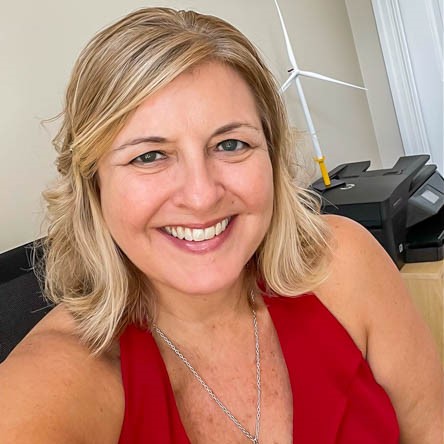
Kim Fitzgibbons
Principal Consultant
Kleinschmidt Associates
Kim Fitzgibbons is a Principal Consultant for Regulatory/NEPA & Permitting at Kleinschmidt Associates. She has specialized in environmental permitting and NEPA compliance for 25+ years. Her market focus is renewable energy, particularly offshore wind. Her academic background in Marine Science and technical background in NEPA and permitting merge well for helping clients navigate the regulatory processes for new offshore wind projects. Kim also instructs NEPA training classes which are customized upon client request. Kim is a member of NAEP, and a co-chair of the Offshore Wind Environmental Professionals Working Group of NAEP.
|
Session A8.2
Navigating Offshore Wind Projects & NEPA and Permitting Simultaneously | NEPA
4:30 – 5:00 PM
| About the Presentation |
|
The New York State Energy Research and Development Authority (NYSERDA) is advancing efficient and responsible port development to support New York State offshore wind (OSW) projects to meet the State's Climate Leadership and Community Protection Act (CLCPA) goal of adding at least 9,000 megawatts (MW) of OSW by 2035. Federal, State, and local permitting authorizations for port upgrades have differing responsibilities and timelines that could delay the development of OSW energy. As such, the risk management of the collective permitting compliance of the New York State-based ports is critical to support the on-time delivery of the State's 2035 OSW energy target.
Since June 2022, HDR has acted as the OSW Port Development and Permitting Liaison (OSW Permitting Liaison) to assist NYSERDA in managing the permitting, construction, and/or funding risks of the New York State-based OSW port projects. As the OSW Permitting Liaison, HDR conducted risk management by tracking and assisting the individual OSW port projects, engaging developers/stakeholders/agencies, coordinating permitting and project schedules, and working to bring alignment between the various parties to minimize project delays. The overall purpose of the OSW Permitting Liaison is to assure New York State's investment in the ports is maximized.As OSW power development is a new industry to the U.S. with extremely aggressive construction schedules, there have been a number of new funding and permitting obstacles for OSW ports to overcome to meet the tight project deadlines. Awarded OSW Farm contracts come with specific OSW power delivery milestones to assure the State's 2035 OSW energy target is met. To assist with the financing of the OSW ports, federal grant funding for OSW port development is available under Maritime Administration's (MARAD's) new $2.2 billion Port Infrastructure Development Program (PIDP). The PIDP federal grant program is enticing for OSW port projects, however, the PIDP requires a rigorous and detailed NEPA review in accordance with MARAD format, content and review requirements. As part of the NEPA process, thorough alternatives analyses and selection of a preferred alternative are required by MARAD and other consulting federal agencies. In order to meet the OSW Farm power delivery schedule milestones, a highly accelerated and concurrent MARAD NEPA and USACE Section 404 Permitting processes must be conducted for the OSW port projects. In similar fashion, if an OSW port is pursuing NY State grant funds, then successful completion of the NY State Environmental Quality Review Act (SEQRA) process in accordance with NY State Department of Environmental Conservation requirements will be required. And to meet the OSW power delivery schedule milestones, an accelerated and concurrent SEQRA and Permitting processes must be performed for the OSW port projects.
Due to unique environmental impacts of the port sites, a number of distinctive site-specific mitigation measures were developed for submerged aquatic vegetation (SAV), forested wetlands, Sturgeon habitat (endangered species), contaminated fill soils, adjacent Environmental Justice (EJ) communities and Tribal lands as part of these processes. We will explore successful and unsuccessful OSW ports navigating the MARAD NEPA, USACE Section 404 Permitting and other Permitting processes. As some of these regulatory review processes would potentially extend beyond acceptable project schedules, a number of corrective actions were required to be undertaken. To provide a culmination of our experience as the OSW Permitting Liaison, we will highlight Best Practices and Lessons Learned. In the conclusion of the presentation, we will also share a summarized fatal flaw analysis of the OSW permitting processes by OSW Port types.
We will explore successful and unsuccessful Offshore Wind port projects navigating the MARAD NEPA, USACE Section 404 Permitting and other permitting processes. As some of these regulatory review processes would potentially extend beyond acceptable project schedules, a number of corrective actions were required to be undertaken. To provide a culmination of our experience as the OSW Permitting Liaison, we will highlight Best Practices and Lessons Learned. In the conclusion of the presentation, we will also share a summarized fatal flaw analysis of the OSW permitting processes by OSW Port types.
|
| About the Speakers |
|
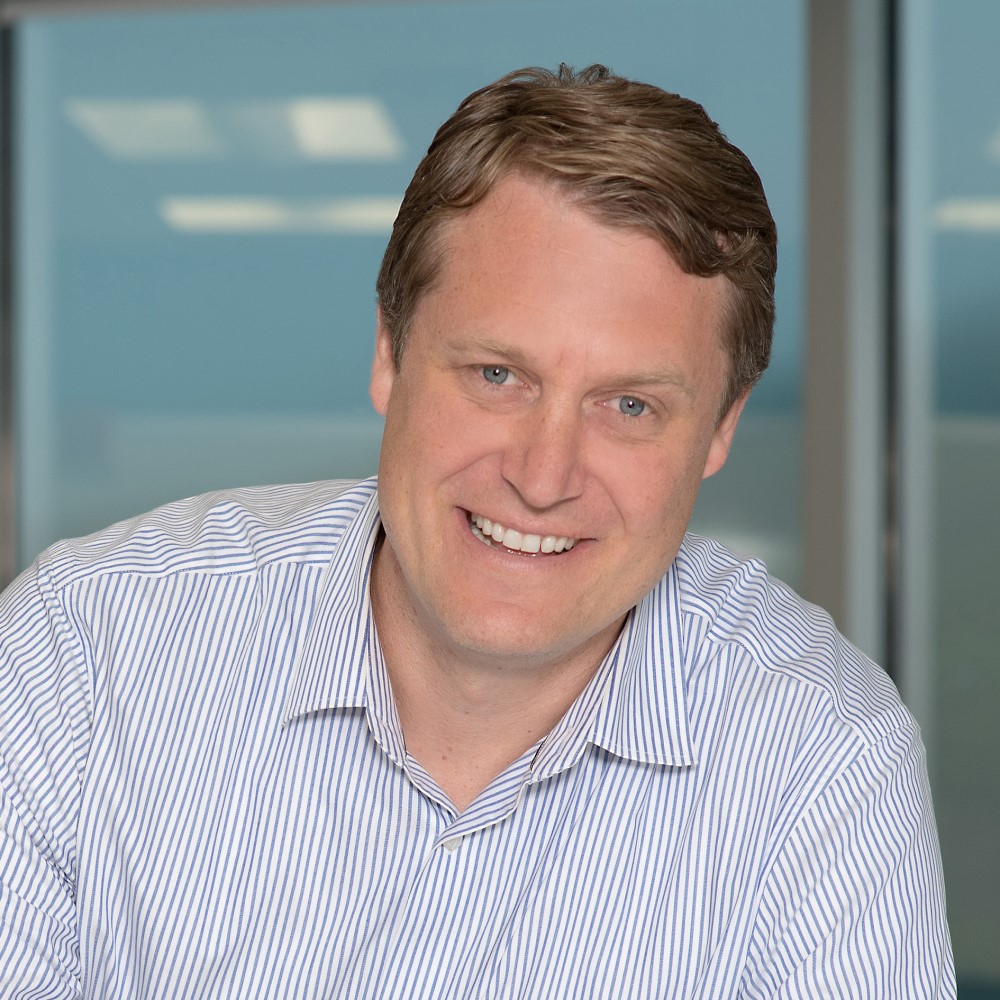
Joshua Gillespie AICP, LEED AP
Environmental Sciences & Planning Lead
HDR
Joshua is an environmental planning and permitting manager with 24 years of experience with environmental assessment and compliance for a diverse range of projects including transit/rail highway/bridge energy/power and facilities development. Joshua has been responsible for the preparation and management of environmental impact statements environmental assessments and compliance documentation following the National Environmental Policy Act (NEPA) the Federal Highway Administration Environmental Impact Procedures the Federal Transit Administration (23CFR771) the New York State Environmental Quality Review Act (SEQR) and the New York City Environmental Quality Review (CEQR). Joshua also manages the permitting process for natural resource projects including wetlands waterways coastal zones navigation issues riparian land and endangered species.
|
Session A8.3
NEPA Greenhouse Gas Analysis: Dealing with Upstream and Downstream Emissions | NEPA
5:00 – 5:30 PM
| About the Presentation |
|
NEPA greenhouse gas emissions analysis practice has been evolving due to changes in administration practices, court cases, and professional practice. Court cases have identified that fossil fuel production or transportation projects, such as natural gas pipelines, must include the downstream emissions related to end-user combustion of fossil fuels. Some building materials, such as concrete, have substantial upstream embodied emissions that have been considered on some large-scale construction projects. Meanwhile, there is an established practice outside of NEPA of quantifying life-cycle emissions, including upstream emissions, use emissions, and downstream emissions that has developed profiles for a variety of products. This session will explore the current state of NEPA case law, NEPA guidance, tools, and practice, philosophical issues of double-counting (and whether it matters), and the potential evolution of practice in the future.
Session Objectives:
- Understanding of current practice on upstream and downstream emissions analysis for NEPA
- Identification of available tools
- Understanding of current challenges and potential future evolution of practice
|
| About the Speaker |
|
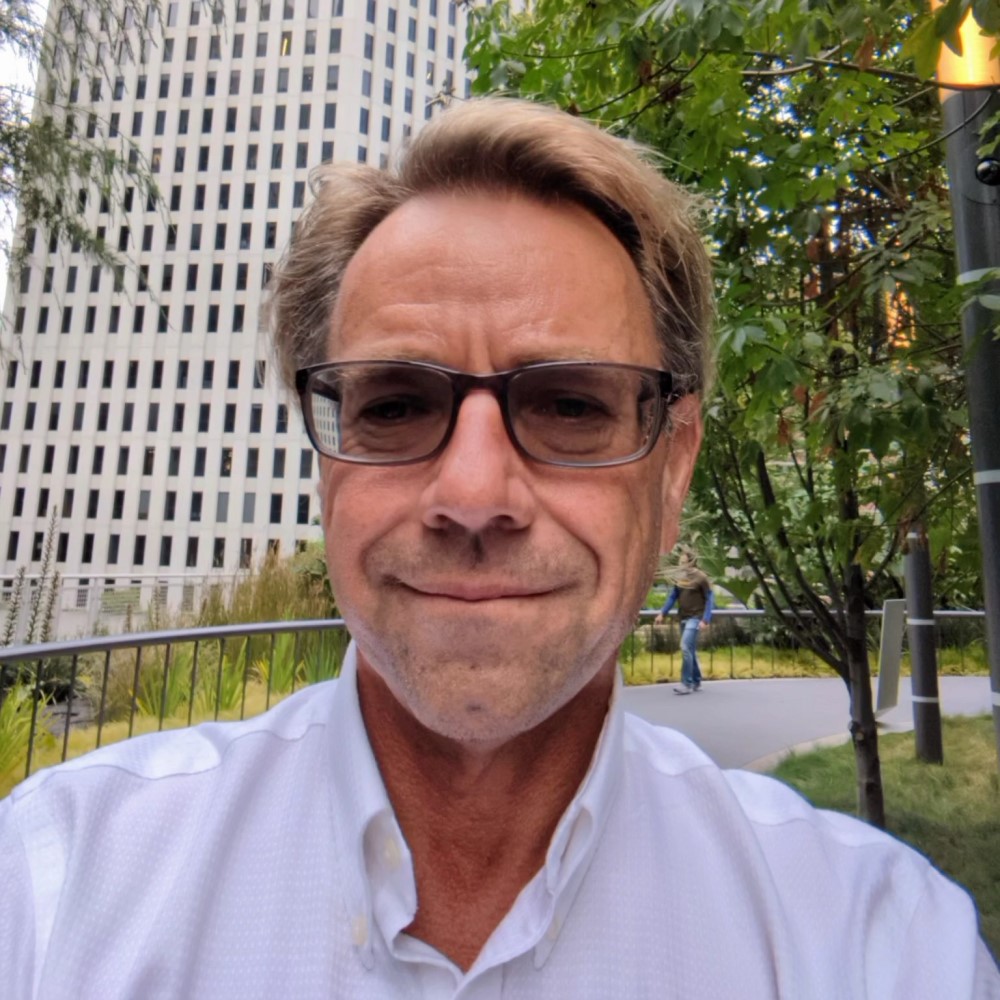
Rich Walter
Vice President, Environmental Planning
ICF
Rich Walter has 30 years of experience in environmental planning, compliance strategy, permitting, mitigation development, and implementation. He has led a climate action planning practice at ICF since 2006 that has developed municipal and community climate action plans and/or GHG inventories for hundreds of communities across the U.S., general plan policies addressing climate change, cost-benefit analyses of emission reductions strategies, studies of adaptation to sea level rise as well as numerous National Environmental Policy Act (NEPA) and California Environmental Quality Act (CEQA) documents addressing GHG emissions, climate change effects, resiliency, and adaptation. He has also authored numerous white papers on climate change for the Association of Environmental Professionals (AEP).
|
Back to Top
Session B8
Emerging Techniques and Strategies for the Environmental Justice NEPA Practice| EJ
4:00 – 5:30 PM
| About the Presentation |
|
With the passage of several states' equity laws, environmental justice is no longer limited to the NEPA analysis of disproportionate impacts. Panelists will share new strategies in expanding traditional NEPA mitigation, new analytical techniques using big data and distributional impacts analysis, and an overview of a few exciting community efforts for redevelopment and restorative justice. It just might expand your view of what EJ can do!
Session Objectives:
- Receive a brief overview of the current state of NEPA EJ practice
- Learn some emerging trends in distributional impacts analysis
- Learn about Washington's Healthy Environment for All (HEAL) Act-Share best practices for EJ and Equity from other states
- Discuss how agencies and communities are addressing historic injustice and current community needs both inside and outside the NEPA process
|
| About the Moderator |
|

Moderator information coming soon!
|
| About the Speaker(s) |
|

Charlene Kay P.E., MURP, MPA
Eastern Region Planning and Strategic Community Partnerships Director
Washington Department of Transportation
Charlene (Char) Kay has served the public for 35 years at WSDOT. Char is currently leading a regional planning team in seven Eastern WA counties. She serves as both an internal and external leader in innovative planning concepts by contributing to statewide and regional efforts that emphasize transportation equity and inclusion with practical solutions. Char serves as a co-lead in WSDOT's fulfillment of Healthy Environment for All (HEAL) Act, as enacted into law in 2021. The HEAL Act advances equitable community participation in planning, resource allocation, programs, and implementation. Char is a licensed Professional Civil Engineer. She received her BS from Temple and holds a Master's in Urban & Regional Planning and Public Administration from Eastern Washington University.
|
|

Hadajo Ferguson, MPH
Strategic Consultant/Public Health Specialist
Jacobs
Hadajo J. Ferguson is a junior strategic consultant, skilled at performing technical and analytical support for projects on sustainability outcomes and multi-objective solutions. She is a graduate of Rollins School of Public Health at Emory University and received her bachelor's degree at Spelman College in Sociology. Hadajo has gained practical experience in community health development, urban sustainability, and climate change adaptation/resiliency. Through her learned public health expertise, she thinks critically, innovates, and challenges the world she sees around her, with the intent to leave the world a more equitable, healthy, and sustainable place.
|
|
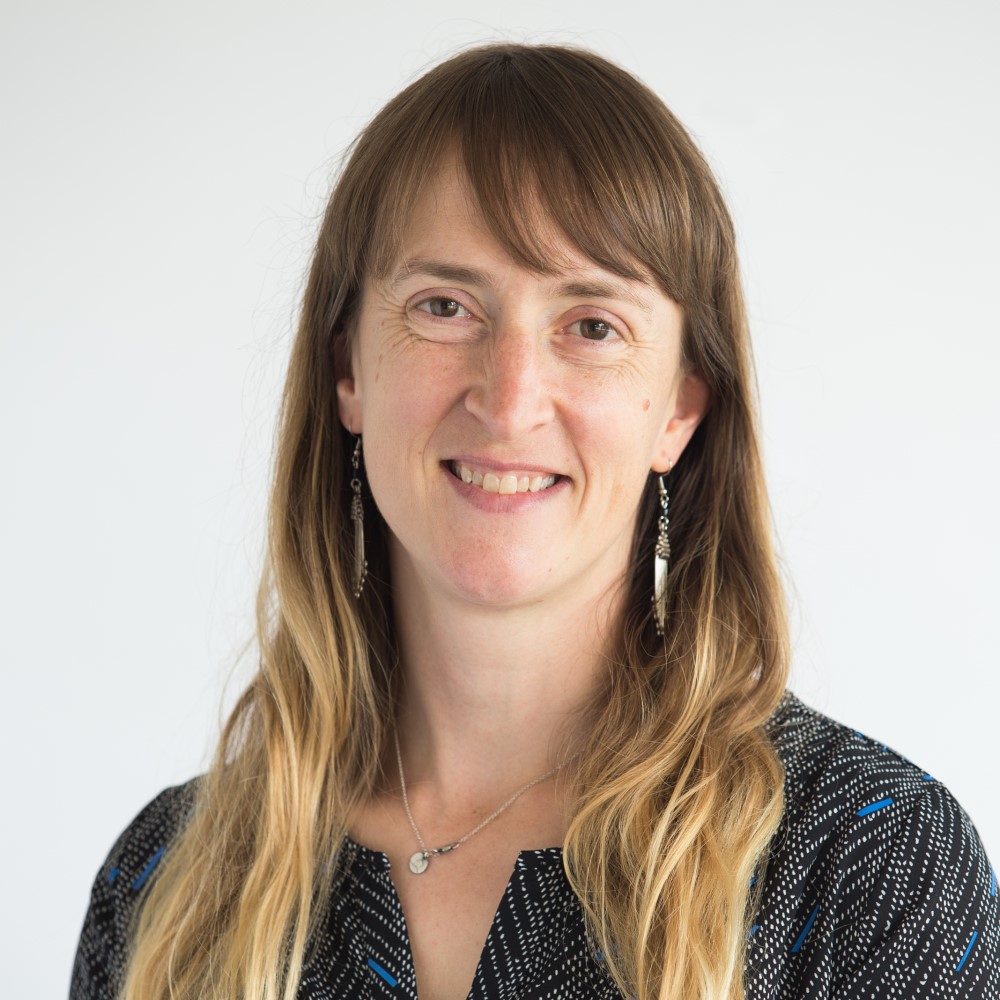
Kim Varner Wetzel, AICP
Senior Environmental Planner
Jacobs
Kim is a certified planner based in Portland, Oregon with over 15 years of experience in public engagement, environmental permitting, environmental justice, and land use planning. Kim works with a variety of clients in the West providing an equity lens for infrastructure projects. She received a master's degree in environmental justice and resource policy from the University of Michigan and a bachelor's degree in earth science from Wesleyan University. She currently serves on the board of the Northwest Association of Environmental Professionals and the City of Hillsboro Planning & Zoning Hearings Board.
|
|
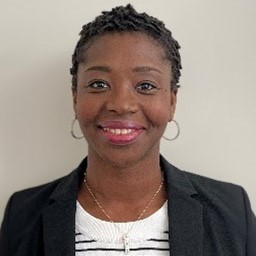
Toyin Ogunfolaju
Infrastructure & Social Economic Inclusion Lead
Jacobs
Toyin Ogunfolaju has nearly 20 years of experience in the infrastructure and government relations industries. Her SEI role supports the delivery of social-economic solutions as Jacobs delivers its core services, which may manifest itself through workforce development, local supply chain sourcing, and community/stakeholder engagement. She has expertise in executive leadership, community engagement, and operations management. She is called upon to analyze critical requirements, identify areas of opportunity, generate solutions, and implement programs.
|
Back to Top
Session C8.1
Ion Exchange Design, Construction, and Operations for Water Treatment and Water | Water
4:00 – 4:45 PM
| About the Presentation |
|
Water utilities across the US West continue to face challenges in meeting our ever-increasing water quantity demand and water quality requirements with limited access to, and availability of unimpaired water sources, and in light of significant drought conditions. For many water providers, certain water resources that were once considered unusable or unaffordable are now being utilized to supplement and meet clean and safe drinking water demands. This is especially important in remote locations where alternative sources are often unavailable, and groundwater quality can be more often impaired than not.
This session will discuss the use of ion exchange water treatment technologies for the removal of many different constituents including nitrates, sulfites, hardness, and per-and polyfluoroalkyl substances (PFAS), with specific real-world examples and lessons learned from the designer, constructor, and operator perspective. The session will also examine the safety factors related to the operation and maintenance of ion exchange systems including strategies designed to reduce waste related to the backwashing process.
The session will address questions such as:
- History of ion exchange
- How the ion exchange process works
- What are the key advantages and disadvantages
- What are the key design decisions to promote confidence in performance and compliance
- Tips to facilitate easy start-up and operations.
|
| About the Speakers |
|
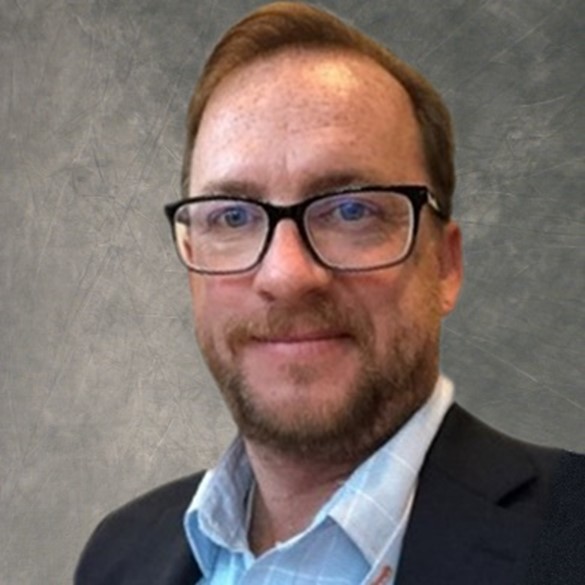
Frederick Tack MS, PE, D.WRE, ENV SP, M.ASCE
Technical Director
GHD Inc
Frederick serves as a Technical Director and is an Associate with GHD based in Arizona, where he leads a team of engineers, operators, and professionals in the engineering, operations, management, and compliance of water and wastewater treatment infrastructure across the U.S. Southwest. Frederick is a licensed civil engineer, board-certified water resource engineer, and certified sustainability professional, with over 21 years of experience. He holds a Bachelor of Science in Civil Engineering, a minor in Urban Planning, and a Master of Science in Civil, Environmental, & Sustainable Engineering from Arizona State University, and is a graduate of the WEF Water Leadership Institute. He is also an ADEQ 4x4 certified water and wastewater operator.
|
|

Speaker information coming soon!
|
Back to Top
Session D8
Working Group Open House
Learn about NAEP Working Groups at this networking session! Please take a moment to review the Working Group Open House Handouts or view the different working group listservs available to NAEP Members.
Back to Top
Back to Schedule
|











